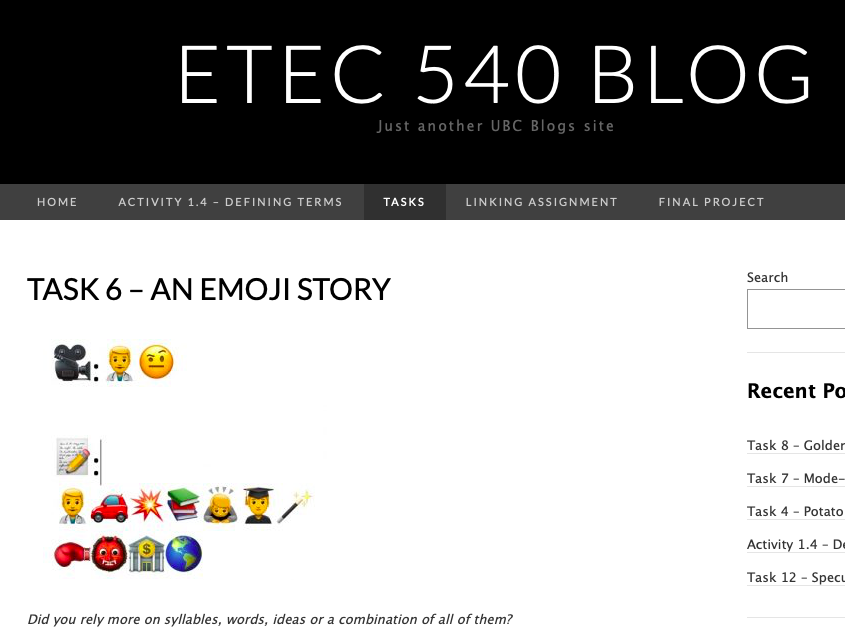
After reading A.MacPherson’s post it really became clear just how difficult emojis are to translate into descriptive information. We can use them to represent an emotion, action, or physical object, but going beyond that creates problems. The perception of individual people varies greatly when it comes to imagery, just like the subjectivity of viewing a piece of art. What creates joy for many, can create sadness in others, or the meaning of a symbol or object can change drastically depending on the culture. For example turtles, in some cultures turtles, are highly revered as representing the planet and supporting the entire Earth, but other cultures have superstitions that believe turtles can slow the rate of success or wealth that can be achieved by an individual, family, or business.
Despite my best efforts, I could not figure out the movie that A. MacPherson was attempting to translate into emoji and it could have been from the way in which they tried to translate the film into emoji or it could more likely be because I have not seen the movie and therefore had no context to reflect on how the emojis connected with the plot.
My own attempt to translate a film plot into emojis may have been more successful because it was a film that was very popular, had been released to watch for over 20 years, and is available to watch in multiple ways (ex: DVD, streaming services, Blue Ray…etc). In the case of A. MacPherson, the film may have been fairly new (released just this past year) and could only be seen at the theatre or through only on streaming service. Thinking in this way, the medium in which the film plot is described may not have any difference on viewers figuring out the movie as it really depends on how popular or well known the movie and its plot are.
